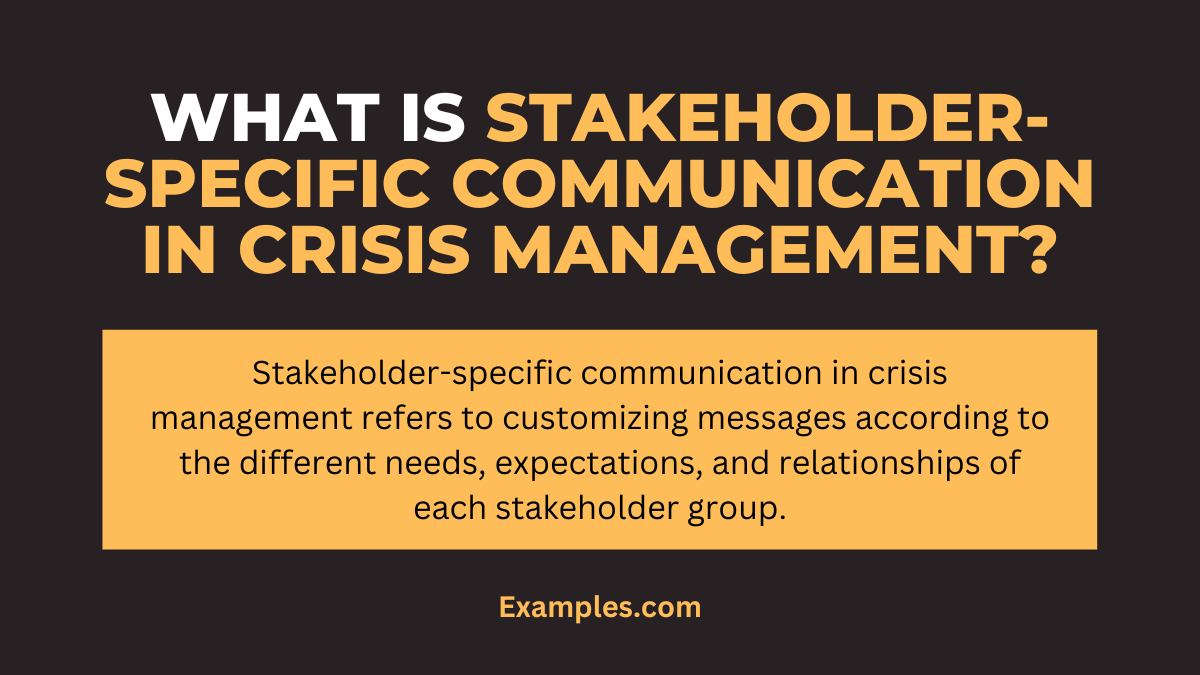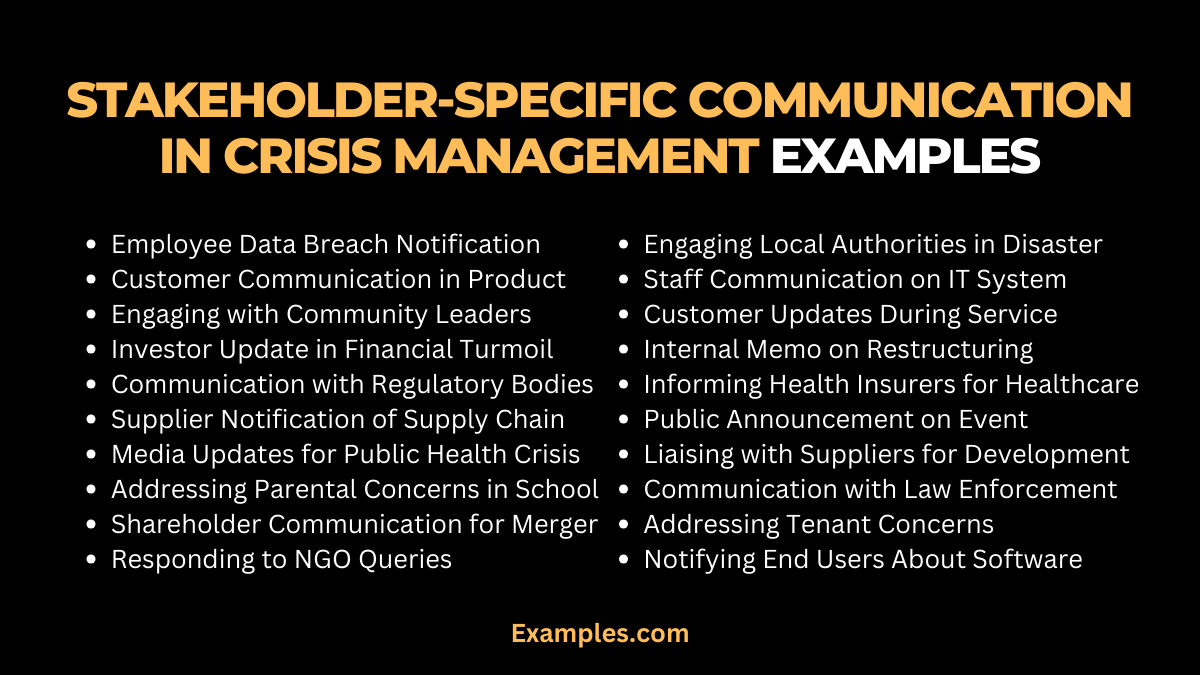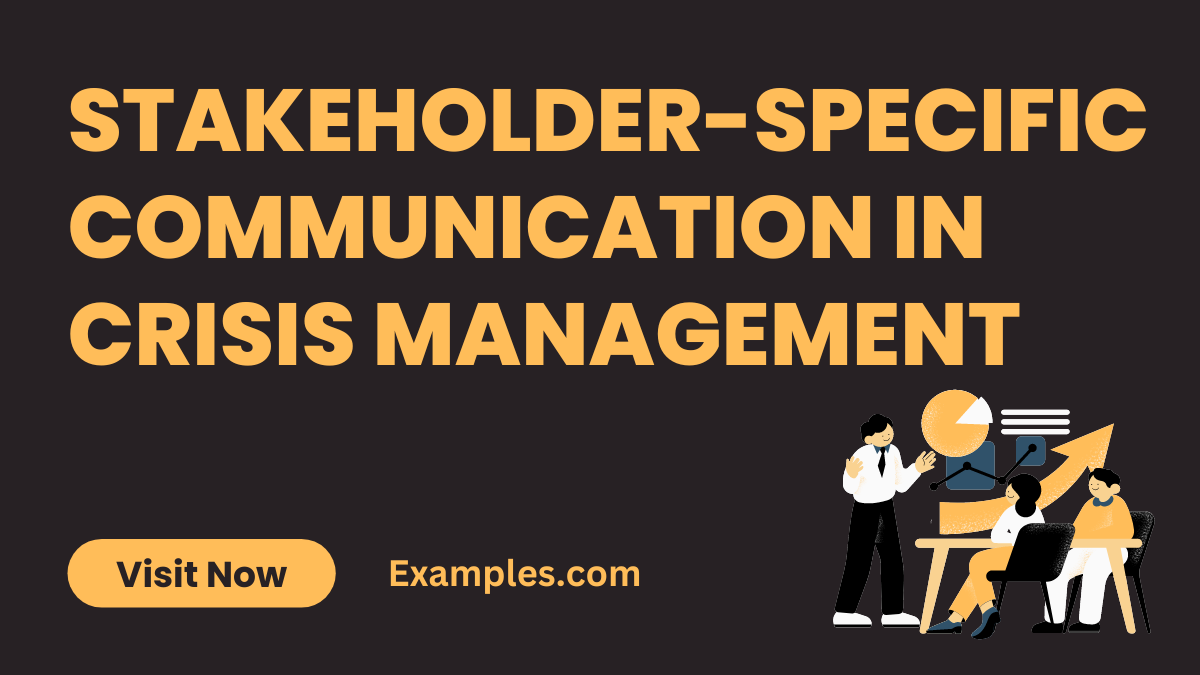Stakeholder-Specific Communication in Crisis Management
Stakeholder-specific communication in crisis management is a strategic approach to delivering tailored messages during emergencies. It involves understanding diverse stakeholder needs, from employees to customers, and crafting communication that resonates with each group. This approach, rooted in the principles of crisis management and public relations, ensures effective dissemination of information and maintains trust. With historical evolution emphasizing stakeholder engagement, this method is crucial for mitigating crisis impacts. Implementing it requires clear understanding, empathy, and adaptability. Utilize these practices to navigate crisis communication effectively, fostering strong relationships and trust among all stakeholders.
What is Stakeholder-Specific Communication in Crisis Management?

Stakeholder-specific communication in crisis management refers to customizing messages according to the different needs, expectations, and relationships of each stakeholder group. This approach ensures that communication is relevant, effective, and addresses the specific concerns of each audience, such as employees, customers, investors, or the general public. Tailoring communication in this manner helps in maintaining trust, minimizing misunderstandings, and effectively managing the crisis for diverse groups involved.
20 Stakeholder-Specific Communication in Crisis Management Examples

Stakeholder-specific communication is critical in crisis management, focusing on tailored messaging for different groups directly impacted by a crisis. This approach ensures clear, relevant, and sensitive communication, fostering trust and effective response. Here are examples illustrating this concept in everyday contexts:
- Informing Employees About a Data Breach: “We’ve experienced a data breach impacting employee records. We’re taking immediate steps to secure our systems and will provide identity protection services for all affected.”
- Addressing Customer Concerns During a Product Recall: “Your safety is our priority. We’re recalling [product] due to [issue]. Please stop using it and visit [website] for a free replacement.”
- Engaging with Community Leaders After an Environmental Incident: “We’re committed to addressing the spill in [area]. We’re meeting with local leaders to discuss impact mitigation and community support plans.”
- Updating Investors During Financial Turmoil: “In light of the recent financial challenges, we’re implementing a strategic plan to stabilize our finances, which includes [specific actions].”
- Communication with Regulatory Bodies During Compliance Issues: “We acknowledge the compliance issues raised and are working closely with [regulatory body] to ensure full adherence moving forward.”
- Informing Suppliers of Supply Chain Disruptions: “Due to unforeseen events, our supply chain has been disrupted. We’re working to resolve this and will keep you updated on new timelines.”
- Providing Media with Updates During a Public Health Crisis: “Our latest findings on the crisis will be shared in today’s press briefing at [time].”
- Addressing Parental Concerns in a School Emergency: “Your child’s safety is our top priority. The situation at the school is under control, and we will provide regular updates.”
- Communicating with Shareholders During a Merger: “The merger with [Company] marks a strategic move to enhance our market position. We will keep our shareholders informed on the progress.”
- Responding to NGO Queries on Corporate Responsibility: “We’re dedicated to sustainable practices and are happy to discuss our initiatives with [NGO name].”
- Engaging Local Authorities in Disaster Response: “We are coordinating with local authorities to provide relief and aid to the affected areas.”
- Updating Staff on IT System Overhaul: “The upcoming IT system overhaul is aimed at improving efficiency. We’ll provide training for a smooth transition.”
- Customer Communication During Service Outages: “We apologize for the service outage. Our team is working on a fix, and we expect to resume normal service by [time].”
- Internal Memo on Organizational Restructuring: “To better align with our goals, we’re restructuring [department]. This change is aimed at enhancing our operational efficiency.”
- Informing Health Insurers About New Healthcare Protocols: “We’re introducing new healthcare protocols, which will be effective from [date]. Please update your systems accordingly.”
- Public Announcement on Safety Measures During an Event: “For your safety, please follow the new safety measures implemented at our event, including [measures].”
- Liaising with Suppliers During Product Development: “As we develop our new product line, we value your input and timely delivery of [materials].”
- Communicating with Law Enforcement on Security Matters: “We are working with law enforcement to enhance security measures at our facilities.”
- Addressing Tenant Concerns in Property Management: “We’re addressing the maintenance issues raised and will keep our tenants updated on the progress.”
- Notifying End Users About Software Updates: “A new update for [software] will be available on [date], featuring [new features]. Please ensure your systems are updated.”
Why is Stakeholders-Specific Communication Important in Crisis Management?
Stakeholder-specific communication is vital in crisis management as it ensures that each stakeholder group receives information tailored to their specific needs and concerns. This approach helps in maintaining trust, reducing confusion, and ensuring effective crisis resolution. By addressing stakeholders’ unique perspectives and expectations, organizations can more effectively manage the crisis, maintain their reputation, and minimize potential harm to stakeholder relationships.
What are the Methods of Stakeholders-Specific Communication in Crisis Management?
Methods of stakeholder-specific communication in crisis management include identifying key stakeholders, understanding their specific concerns, and using the most effective channels to reach them. Each method is chosen based on its suitability to convey relevant information to the particular stakeholder group effectively, ensuring clarity and fostering trust during the crisis.
Methods of stakeholder-specific communication in crisis management include:
- Segmented Messaging: Customize messages to address the unique concerns and needs of different stakeholder groups.
- Direct Channels: Utilize direct communication channels like emails, meetings, or personalized letters for specific groups to ensure message clarity and reception.
- Feedback Mechanisms: Establish systems for receiving and addressing feedback from stakeholders, allowing for a two-way communication flow.
- Cultural Sensitivity: Adapt communication styles and content to respect the cultural differences and sensitivities of diverse stakeholder groups.
- Regular Updates: Offer consistent and regular updates, ensuring that each stakeholder group receives information relevant to their interests and concerns.
- Crisis Communication Team: Have dedicated team members responsible for communicating with specific stakeholder groups, ensuring focused and effective messaging.
- Social Media Engagement: Effectively use social media platforms to reach broader audiences and engage interactively with different stakeholder groups.
- Transparent and Honest Communication: Maintain openness and honesty in all communications, as this builds trust and credibility during a crisis.
What are the Steps to Engage Stakeholder-Specific Communication in Crisis Management?
Here are the Steps to Engage Stakeholder-Specific Communication in Crisis Management:
- Identify Stakeholders: Recognize all relevant groups affected by the crisis, including employees, customers, investors, and the local community.
- Understand Stakeholder Needs: Analyze the unique concerns, expectations, and information needs of each stakeholder group. Different groups may require different information or reassurance.
- Develop Tailored Messages: Create customized messages that are relevant and address the specific concerns of each stakeholder group. This ensures that communication is meaningful and effective.
- Choose Appropriate Channels: Select the best communication channels for reaching each group. For example, internal stakeholders may require direct emails, while social media might be more effective for the public.
- Communicate Regularly: Provide frequent updates to keep all stakeholders informed as the situation evolves. Regular communication helps maintain trust and manage expectations.
- Adjust Strategies: Be prepared to modify your communication strategy based on feedback and the changing dynamics of the crisis. Flexibility is key to effective crisis communication.
How to Communicate Effectively with Stakeholders in Crisis Management?
Here are the Points to Communicate Effectively with Stakeholders in Crisis Management:
- Clarity and Honesty: Transparency is key. Provide clear, factual information to avoid misunderstandings and rumors. Honesty fosters trust and credibility.
- Empathy: Acknowledge the challenges and emotions stakeholders might be experiencing. Empathetic communication can help in soothing concerns and building a connection.
- Consistency: Ensure that the information shared across various channels and with different stakeholders is consistent. Inconsistent messages can lead to confusion and mistrust.
- Responsiveness: Address inquiries and concerns swiftly. Prompt responses demonstrate commitment and attentiveness to stakeholder needs.
- Proactive Engagement: Initiate communication with stakeholders; don’t wait for them to reach out. Proactive engagement can prevent misinformation and reassure stakeholders.
- Build Trust: Cultivate trust through ongoing, transparent, and reliable communication. Trust is crucial for maintaining relationships during and after a crisis.
- Post-Crisis Follow-Up: Maintain communication channels even after the crisis has subsided. Ongoing communication aids in rebuilding normalcy and learning from the crisis.
In conclusion, stakeholder-specific communication in crisis management is pivotal for effective resolution and relationship management. By tailoring communication strategies to the unique needs and perspectives of each stakeholder group, organizations can ensure more precise, impactful messaging. This approach not only aids in crisis resolution but also strengthens trust and transparency, crucial for long-term relationship maintenance. Effective stakeholder communication is a vital component in any crisis management strategy, underscoring the importance of understanding and addressing varied stakeholder concerns.



